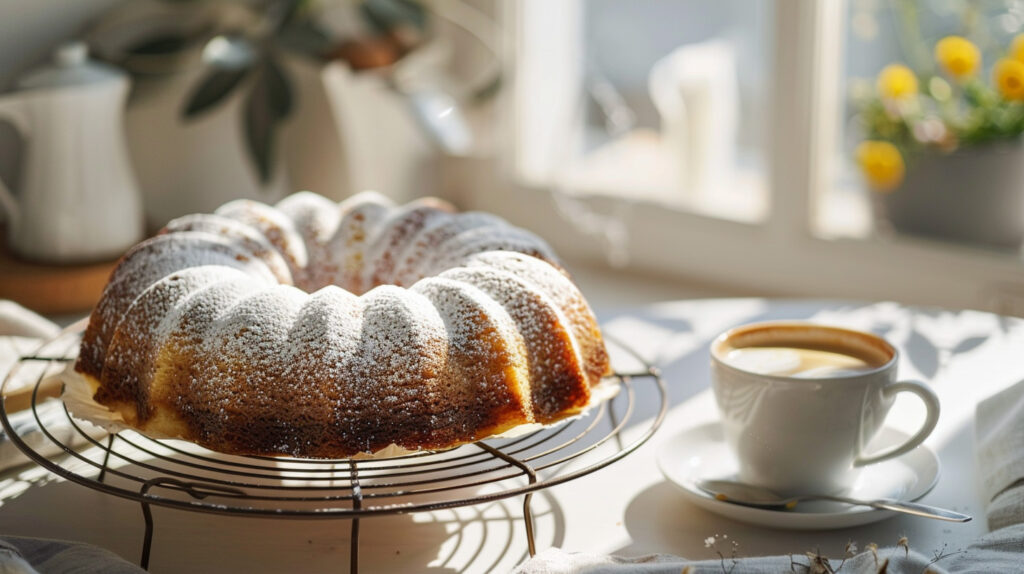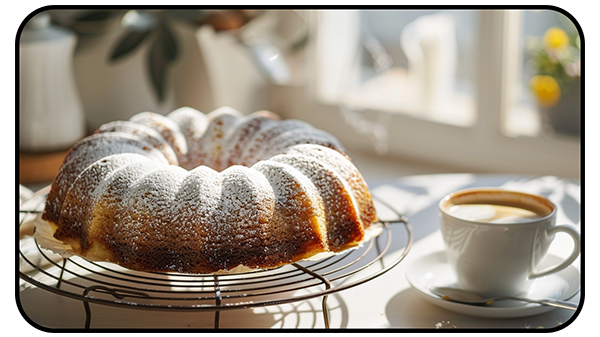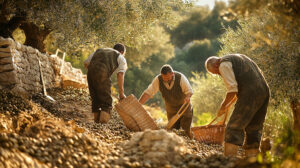
Albanian Pastiçe: Easy baked pasta recipe
Discover Albanian pastiçe: bucatini with feta and eggs baked into a golden pie—simple, nourishing and perfect for hectic days.
The aroma of a freshly baked bundt cake wafting through the kitchen often brings back nostalgic memories. While home baking has become less common these days, some recipes are so simple that you can easily whip up your own delicious bundt cake in no time. At Aljeta, we show you how to create a healthy and flavorful bundt cake that will impress your family with just a few simple steps.
Instead of butter, this recipe uses extra virgin olive oil, which not only makes it healthier but also adds a unique flavor to the cake.

To trace the history of the bundt cake, we must travel to Austria, where a baked good known as Gugelhupf originated. A “Gugel” was a medieval hood that covered the head and shoulders. The name, therefore, described a headpiece back then. The French found the Gugelhupf so delicious that they adopted the recipe, although they had trouble pronouncing the name. Gugelhupf became “kougelhopf” in French. The Gugelhupf was also baked in a ring-shaped mold.
Around the year 1500, a Gugelhupf was often served at festive occasions in Austria, such as weddings. The Gugelhupf was decorated with flowers, leaves, candles, and seasonal fruit. Eventually, the name was standardized in Viennese cookbooks as a refined, rich cake, flavored with rose water and almonds. The Gugelhupf became so popular that many regional variations emerged.
In the Netherlands, the Gugelhupf was named “tulband” (which means turban), because the baking mold resembled the Arabic head covering. However, the exact time when the bundt cake arrived in the Netherlands is somewhat of a mystery. The oldest known recipe dates back to 1769.

This olive oil bundt cake offers a delicious and healthy twist on a classic recipe. By combining the rich, smooth taste of extra virgin olive oil with the fresh flavor of lemon and the subtle sweetness of vanilla, you get a cake that is both light and flavorful. Perfect for any occasion, from festive gatherings to a cozy afternoon with coffee.
Cuisine: Dutch, European
Course: Dessert, Cake
Keywords: bundt cake, olive oil bundt cake, bundt cake recipe, healthy cake, lactose-free cake
For those who avoid lactose, this recipe offers a perfect solution. By replacing Greek yogurt with lactose-free yogurt or quark, you can easily create a lactose-free version of this bundt cake. This way, everyone can enjoy this delicious cake, regardless of dietary preferences or restrictions.

Discover Albanian pastiçe: bucatini with feta and eggs baked into a golden pie—simple, nourishing and perfect for hectic days.

The flag of Albania is more than just red and black. This article explores the deeper meaning behind its national symbols – from the double-headed eagle to the traditional ‘Shqiponja’ hand gesture, the unique Albanian language, and the country’s rich cultural heritage. A story of pride, identity, and history captured in one powerful symbol.

This homemade chili oil with Extra Virgin olive oil is a flavor bomb that’s also great for your health. Easy to make and incredibly versatile.

Albania is home to thousands of medicinal plants. Discover how traditional herbal wisdom not only impacts lives, but also shapes a unique export industry.

Despite an increase in risk factors such as an unhealthy diet and less physical activity, cardiovascular mortality in Spain remains surprisingly low. What explains this mysterious ‘Spanish Paradox’? Discover how a key element of the Mediterranean diet plays a crucial role.

The Albanian olive harvest is severely impacted by a labor shortage, leading to a significant decline in olive oil production and exports. In the first nine months of 2024, exports dropped by 60% compared to the same period in 2023. This not only poses challenges for the domestic market but also hinders Albania’s position as an emerging olive oil producer.